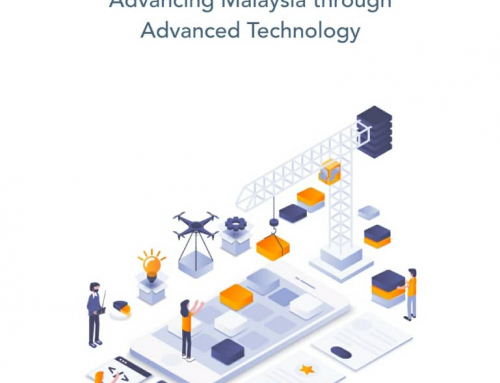
As mobility becomes the norm, the nature of the workplace changing significantly.
EVERY cloud has a silver lining, and this proverb can be true for the current situation we’re facing right now.
In the midst of fighting Covid-19, businesses all over the world faces an enormous challenge trying to adapt to the new Work From Home (WFH) environment to ensure their staffs stay safe and healthy.
And as the Fourth Industrial Revolution kicked off, great emphasis was placed on the role of digital transformation in defining how businesses would remain relevant in the future. Up until two months ago, the actual transformation has been rather slow for many.
However, today, it turns out that this pandemic that we are facing has been the greatest catalyst for digital transformation that the world has seen, with companies now accelerating adoption of these future work practices that have been discussed for years. Digital readiness is no longer optional, it’s a must.
According to Intel Asia Pacific and Japan Territory’s managing director, Santhosh Viswanathan, since the introduction of the Movement Control Order (MCO), Malaysian businesses have shut down en-masse as part of the effort to contain the Covid-19 outbreak, many employees and employers have been experiencing WFH for the first time.
Similar scenarios are also being carried out across the region and the world, as governments and businesses ask their citizens and employees to stay home.
“This is a seismic shift in the way we are working and living, at least for the foreseeable future. As much as work is having to adapt to a new reality, our homes will need to adapt to work and the need to stay productive to keep businesses running, and workers employed. This is already creating a bit of a confusing dichotomy for workers who now need to balance the needs of employment against the challenges that come with working from home, and an ongoing economic crisis that has just gotten worse,” said Viswanathan.
“This change will lead to interesting insights in how both employees and employers will reshape the definition of what a workplace should be, and for many, what the work-from-home perk will look like in the future,” he added. Over the last few weeks, Malaysians have been witnessing how their work norms have changed in at least four ways.
Mobility factor
The first is that mobility is becoming a baseline for many. Viswanathan said technology has slowly been shifting the burden of efficiency towards the end user for years.
“However, the Covid-19 developments have presented both governments and businesses with the need for formidable and immediate change, forcing them to find ways to be able to continue to function, given the many necessary limitations and mandates put in place to help flatten the curve,” he said.
“Despite the initial teething issues, and while there are still other issues to properly iron out especially in areas of security best practices, as it turns out, a geographically dispersed workforce can function to an effective degree, especially in the more critical parts of both the public and private sectors. This is in part thanks to the rapid progress we have made in past years in building a connected society,” he added.
As this work arrangement continues, people will see businesses and organisations finally realise that business in this new normal can still be a reality, even as parts of the workforce continue to function remotely. Mobility will no longer be an option, but a given.
New workplace concepts
As mobility becomes the norm, the nature of the workplace changing significantly. To start, employers will look to make telecommuting a more permanent arrangement. A recent Gartner survey is showing that 74 percent of CFOs are planning to move previously on-site employees to remote work arrangements post-Covid-19.
“After all, not needing your workforce to be in the same place all at once also means savings on office rental, renovations and ongoing maintenance,” said Viswanathan. “The effective interaction over time is what improves both collaboration and innovation. Perhaps this new and less-crowded workplace emphasises a new paradigm for the office, where ideas, interactions and our work relationships can thrive instead of being a bunch of cubes where we work in solitude,” he said.
Also, there will be a complete rethink about what office spaces will look like in the near future, and expect these new ideas and thinking about new office environments will be adopted by some for sure.
Enhancing productivity at home
The widespread use of laptops and mobile devices have encouraged an always-on, always-connected mentality, which some employers have taken advantage of, often blurring the boundaries between work and life.
As remote work results in a lack of performance visibility, employees end up feeling the need to self-manage more. “This constant reminder that productivity is the default measure of accomplishment leads them to work longer hours from home than in the office.
“As businesses’ and governments’ work-from-home policies are accelerated and put to the test in short order, both employers and employees will have to start having a higher degree of trust in the workplace. Employers must trust that their employees will get work done, while considering that some adjustments are inevitable, especially for those with family responsibilities to manage while also working from home,” said Viswanathan.
For employees, he said, this flexibility and trust can lead to improved productivity while working from home. A study conducted by Stanford University revealed that performance among call centre employees who worked from home for nine months saw an increase by 13 percent.
“It also helps that technologies that enable productivity and collaboration has become affordable and ubiquitous for many, such as high-speed internet connectivity, high-performance laptops in thin-and-light form factors, as well as the emergence of numerous cloud-based platforms for financial services, e-commerce and more,” he added.
New social norms
Many businesses were afraid to implement flexible work practices before the pandemic but are now diving into this Home/Work world with urgency. Flexible work practices will become the norm in a post-Covid-19 world.
“The past few weeks have shown that we have become more comfortable utilising technology to collaborate and people are becoming use to utilising video to build strong and lasting relationships (whether professional or personal) over long distances,” said Viswanathan.
“On the personal and social side of things, we’ll start to see higher levels of awareness, sensitivity, and comfort levels come about with regards to distancing practices. The extended time at home for many will go a long way in establishing better work-life balance, whether practising better self-discipline to be optimally productive during working hours, or getting better at setting a clear end to the workday in order to spend more time with family, and post-Covid-19, perhaps to have more frequent catch-ups with friends in and outside of work, or to attend a concert,” he added.
While WFH is a lifesaver, Viswanathan feels that it cannot completely replace the human connection and friendships that we build at work, by physically coming into an office and engaging face to face with colleagues.
“As the Fourth Industrial Revolution kicked off, great emphasis was placed on the role of digital transformation in defining how businesses would remain relevant in the future. Up until two months ago, the actual transformation has been rather slow for many.
“Today, it turns out that Covid-19 has been the greatest catalyst for digital transformation that the world has seen, with companies now accelerating adoption of these future work practices that have been discussed for years. Digital readiness is no longer optional,” he said.
“Nevertheless, these are extraordinary times for all, and it is important that we consciously and deliberately rethink how we approach our relationships with work, technology, and more importantly, the people in our lives, so as to ensure that we can come out all the better and stronger when this crisis ends,” he concluded.
Source: https://www.nst.com.my/lifestyle/bots/2020/05/590046/tech-covid-19-catalyst-digital-transformation






